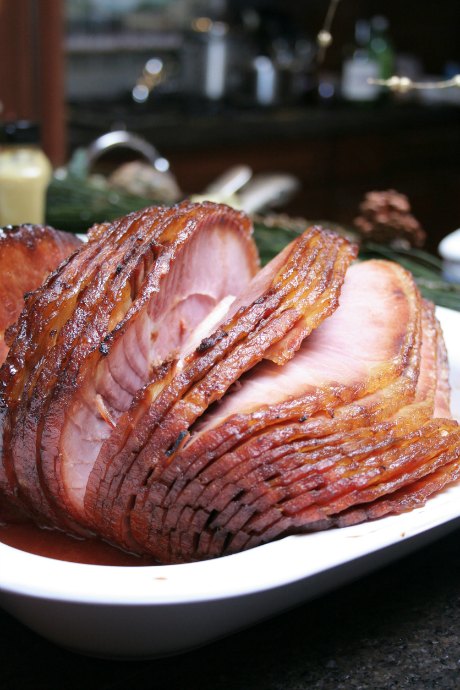How to Cook Ham for the Holidays
Posted by Julie on Apr 11th 2017
Ham is the meat of choice for many holidays, from Easter to Christmas. Whether you carve it at the dining room table or transfer slices to a serving platter in the kitchen, ham can be a festive main dish.
Make sure your ham tastes as good as it looks. Bone up on the basics of how to cook ham, so you can impress your guests and have plenty of delicious leftovers.
How to Cook Ham: City or Country?
If you don't live in the southern US, you may not even know that there are two types of ham: city and country.
Country ham is dry cured and aged, so it's quite salty. It's usually eaten in the south, but even there it's rare in the springtime. City ham is what you're most likely to buy. It's soaked in brine and fully cooked, so you're really just reheating it when you cook it at home.
How to Cook Ham: Whole or Half? Shank or Butt?
Ham refers to the hind leg of a pig. A whole ham extends from hip to ankle. That's probably more meat than you need. Buy a whole ham if you're hosting everyone on both sides of your family. Otherwise, a half ham will do.

A half ham can be either the shank end (bottom of the pig's leg) or butt end (top of the pig's leg). The shank end is fattier, and it's easier to carve because there's only one bone. The butt end is leaner, and it can be more difficult to carve due to the odd shape of the pelvic bone.
How to Cook Ham: Water or Juices Added?
Because city ham is cured by soaking in brine, ham may be labeled as "ham with natural juices" or "ham with water added." How much additional liquid is acceptable before it degrades the quality of the meat?
The consensus seems to be that ham without any natural juices or water tastes best. Ham with water added -- or worse, ham and water product -- suffers in terms of both taste and texture. If you're buying a ham for a special holiday dinner, don't skimp. Spend your money on meat, not brine.
How to Cook Ham: Boneless or Bone-in?
While boneless ham is easier to carve, bone-in ham won all the taste tests. In fact, Serious Eats noted that presence or absence of the ham bone had a bigger impact on taste than whether the ham had natural juices or water added. This video from Real Simple demonstrates how to carve bone-in ham.
Plus, you can save and freeze the ham bone for use in soup, such as the bean soup recipes we recently featured.
How to Cook Ham: Cooking Tips
If you've splurged on ham without any natural juices or water added, be sure not to dry it out in the oven. Cover it with aluminum foil or heat it in a roasting bag. It can also help to add wine, water, or another liquid to the bottom of the roasting pan.
Don't uncover the ham to glaze it until it's within 15 minutes of reaching the proper internal temperature. (Refer to the instructions on the label of your ham.) There's no need to glaze it sooner, and you risk drying out your ham. When you do glaze it, crank the heat up a bit to help the glaze caramelize.
How to Cook Ham: Cooking Tools
While you can buy disposable aluminum roasting pans, we're partial to Le Creuset's enameled cast iron roasters. It's a special occasion, so why not pull out all the stops? You'll also want a meat thermometer, a large cutting board, and a carving knife and fork.
Do you have any tips or tricks to share for how to cook ham? Leave them in the comments!
 Free shipping over $49
Free shipping over $49










